‘It’s important to allow your early work to continue to influence you,’ says Takesada Matsutani (b. 1937), pointing to the paintings, drawings, and writings on the floors, pillars, and walls of his crammed studio, a former cabinet-maker’s atelier in Paris’s 11th arrondissement. Every surface of the artist’s studio is covered in papers, electric fans, and strange, fish-shaped postcards; books take up an entire wall. Then there are the artworks themselves, made at every scale imaginable. They range from Matsutani’s early vinyl-glue pieces, to prints from his time as Stanley William Hayter’s assistant at Atelier 17, and more recent works, which are dark agglomerations of vinyl, ash, graphite, and ink.
The 79-year-old artist is slight, and just faintly stooped, but still displays the mental and physical energy that might be expected of a veteran of one of the most dynamic avant-garde movements of the post-war period, the Gutai Art Association. Gutai (the word means ‘concrete’, but can be translated as ‘embodiment’) is experiencing a moment in the sun, but it is only recently that the importance of post-war Japan’s art scene as a whole has been properly recognised. This re-evaluation can be traced back to ‘Japanese Art after 1945: Scream Against the Sky’, the influential exhibition curated by Alexandra Munroe, which began at the Yokohama Museum of Art in 1994, before travelling to New York and San Francisco. The exhibition sparked an interest in post-war Japanese art (including, but not confined to the Gutai group) that, in the US, has led to survey shows at the Getty (in 2007), at MoMA (in 2012), and at the Guggenheim (in 2013).
As interest in the activities of the Gutai group has grown, Matsutani has become something of a grand old man. In recent years there has been a string of retrospectives of his work at major Japanese museums, such as the Otani Memorial Art Museum, in his hometown of Nishinomiya and at the Museum of Modern Art, Kamakura & Hayama. He also took part in the Guggenheim’s ‘Gutai: Splendid Playground’ exhibition in 2013; a solo show called ‘Matsutani. Gutai Spirit Forever’ ran at the Galerie Richard, New York at the same time. But such success has taken years to arrive.
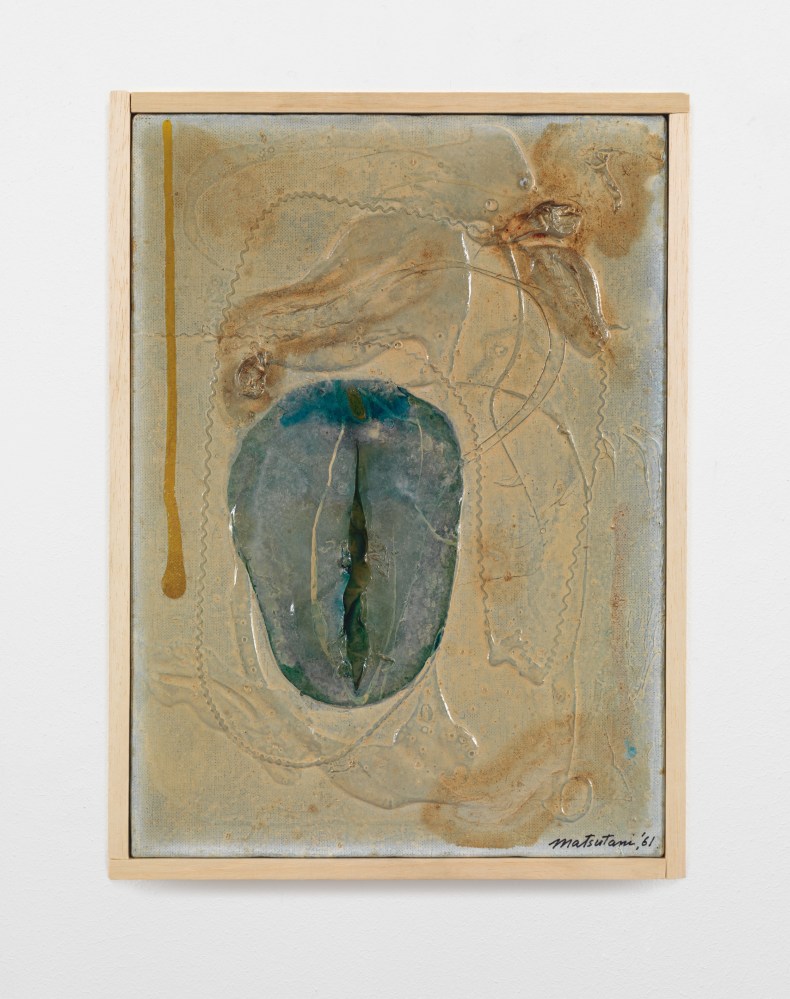
Work 61 (1961), Takesada Matsutani. Courtesy Hauser & Wirth; © Takesada Matsutani
Matsutani was born in Osaka just before the Second World War. He is an engaging and natural storyteller and reminisces about growing up in Japan during and after the war, a period that for all its hardship, he says, fostered astonishing developments in many art forms. Discussing the difficult years immediately after the war, Matsutani says, ‘Materially, they destroyed us completely, but spiritually and artistically they couldn’t. We had deep things before the war, we never lost those.’ The American firebombing laid waste to Osaka and Kobe. By August 1945 cities that had previously formed the greatest concentration of docks, rail, and heavy industry in east Asia were a blackened wasteland. Matsutani says, ‘My family was in the countryside, close to Osaka, towards Kyoto. I remember seeing Osaka burning, all the sky red, the next day a strange rain with ash or something, black rain.’
Despite all this destruction, the period after the end of the US occupation (1945–52) was a golden age for the arts. In the absence of galleries, impromptu shows were held in every imaginable space: in schools, on beaches, train stations, parks, and in the streets. It was in this atmosphere that Jiro Yoshihara (1905–72) published the ‘Gutai Manifesto’ in 1956. He called for artists to ‘Take leave of these piles of counterfeit objects on the altars, in the palaces, in the salons and the antiques shops’ and to ‘Do what has never been done before!’ Earlier in the same year, the Gutai Art Association, which Yoshihara had formed, had staged the ‘One Day Only Outdoor Art Exhibition’ in the cratered and flooded ruins of a colossal factory near Osaka. (Yoshihara came from a family of wealthy industrialists to whom the former factory belonged.) In the show Kazuo Shiraga hacked wildly at an assemblage of painted logs, while Sadamasa Motonaga used an elaborately constructed machine to pump smoke into the air. Meanwhile, Yoshihara himself gave the world’s first demonstration of ‘kinetic poultry art’ when he painted half a dozen live chickens in primary colours and set them scrambling through the mud and rubble.
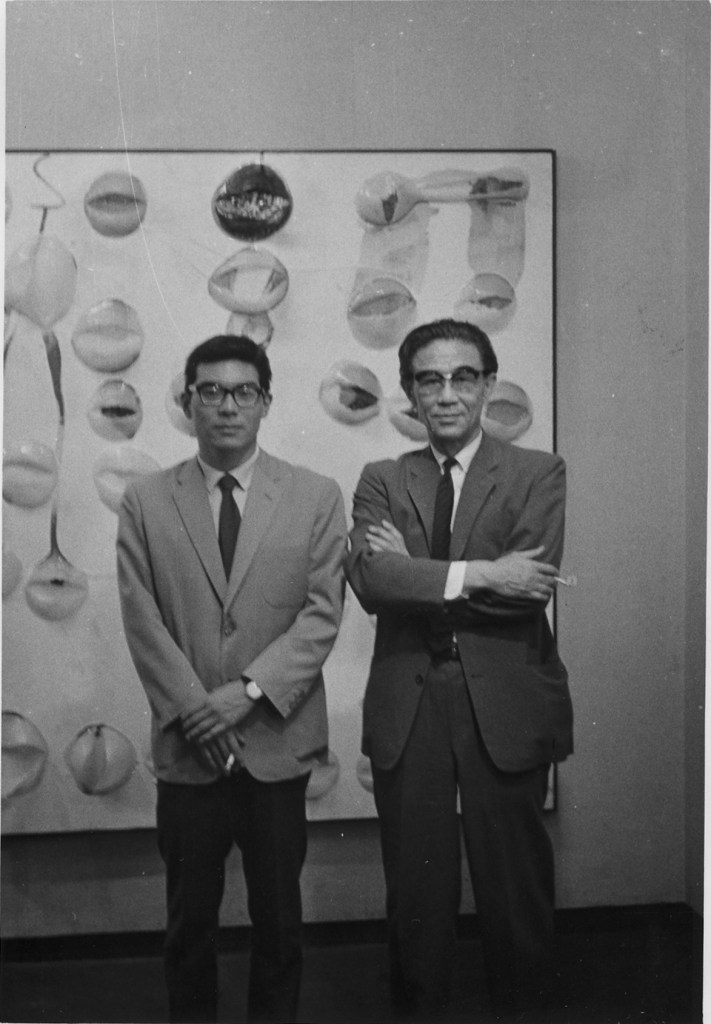
Takesada Matsutani (left) and Jiro Yoshihara (right) at Matsutani’s 1963 solo exhibition at the Gutai Pinacoteca, Osaka. Courtesy Hauser & Wirth
At the time of this groundbreaking exhibition Matsutani was 20 years old and in hospital with tuberculosis. ‘I began to cough up blood again, and had to drop out of art school,’ he says. ‘In total, I spent eight years in and out of hospital.’ Able to do little except read and hone his drawing skills, Matsutani kept a close eye on local arts coverage. ‘The papers were calling their shows a “scandal”. I remember thinking, “This is not art, this is pollution.”’ (He speaks in French-inflected English throughout our conversation.) ‘Ko-u-ga-i,’ – he repeats the word in Japanese, enunciating each character for emphasis.
Even among intellectuals, the reaction to Gutai was muted at the time. Sanami Hajime, a prominent Tokyo critic, summarised the capital’s (rather stiff) view of Gutai in 1956, when he described it as ‘immature works that hardly measure up to accepted categories of painting and sculpture.’ Matsutani believes that this hostility can partly be explained by the group’s firm rooting in the Kansai region (the area around Osaka, Kobe, and Kyoto). ‘We were doing something against Tokyo,’ he explains. ‘It’s important to remember that Tokyo was a long way at that time, 10 hours away by train. Kansai has a different culture: mercantile, more egalitarian. There was a feeling that they held us in contempt.’
There is also a feeling in Japan that only recent, Western interest has legitimised the work in the eyes of the Japanese public and the art-historical establishment. Matsutani is scathing about this trend. As he explains, ‘Abstract Expressionism and Art Informel were taking the world by storm. But very few people understood what Gutai was doing. The Japanese public in particular had zero understanding.’ He clenches a fist and motions the hammering of a nail, a visual shorthand for the popular admonishment to Japanese children: ‘The nail that stands up gets hammered down.’
By the late 1950s, Matsutani had finally overcome both tuberculosis and also his initially conservative reaction to Gutai. He had been studying nihonga, traditional Japanese figurative art, but after embracing abstract art, he was determined to take part in Gutai. He was, however, prevented from doing so by Yoshihara, whose control over the group was total. As Matsutani puts it: ‘He was a hard person, in that sense it was a typical Japanese group – sensei and deshi – master and apprentice. His position was like that of the emperor, or a dictator.’
This initial rejection inspired Matsutani to experiment. A friend at medical school showed him some microscope slides of blood, and the artist responded by trying to recreate them using the industrial glue polyvinyl acetate, a material he has been using now for almost 60 years to achieve disconcertingly flesh-like forms and textures, which recall genitalia, prophylactics, and blisters rent asunder. ‘I was experimenting with the glue outside, and by chance the wind made it dry like stalactites. It was an interesting effect, but you couldn’t control the process, so I thought about using a fan, which I had in my small studio. I pooled the glue on the canvas, it dried in the shape of mochi – a rice cake. Then when it was dry I cut into it. I realised that I had an organic side to my mind, un peu sensuel, un peu érotique,’ he says. ‘I discovered myself, by chance, in action.’
This development is exemplified by the sensuality of works such as Work 62-3 (1962) and Work 63-K (1963), in which he has mixed the glue with acrylic and oil paints, the colours hinting at decay. Michel Tapié, the French critic, curator and collector, happened to be in Japan at that time and was impressed: ‘I have never seen such material used like this.’ His endorsement did the trick and in 1963, Matsutani was finally admitted as a full member of Gutai (he had been allowed to exhibit alongside the group since 1960) and given a solo show by Yoshihara. By that time however, the group had undergone a shift in direction and less stress was placed on performance. ‘Tapié brought the paintings here to Paris, to his gallery, where they sold quite well,’ Matsutani explains. ‘But it was a delicate balance. The fact that there was a market for Gutai paintings meant that the members had less time [for] action.’
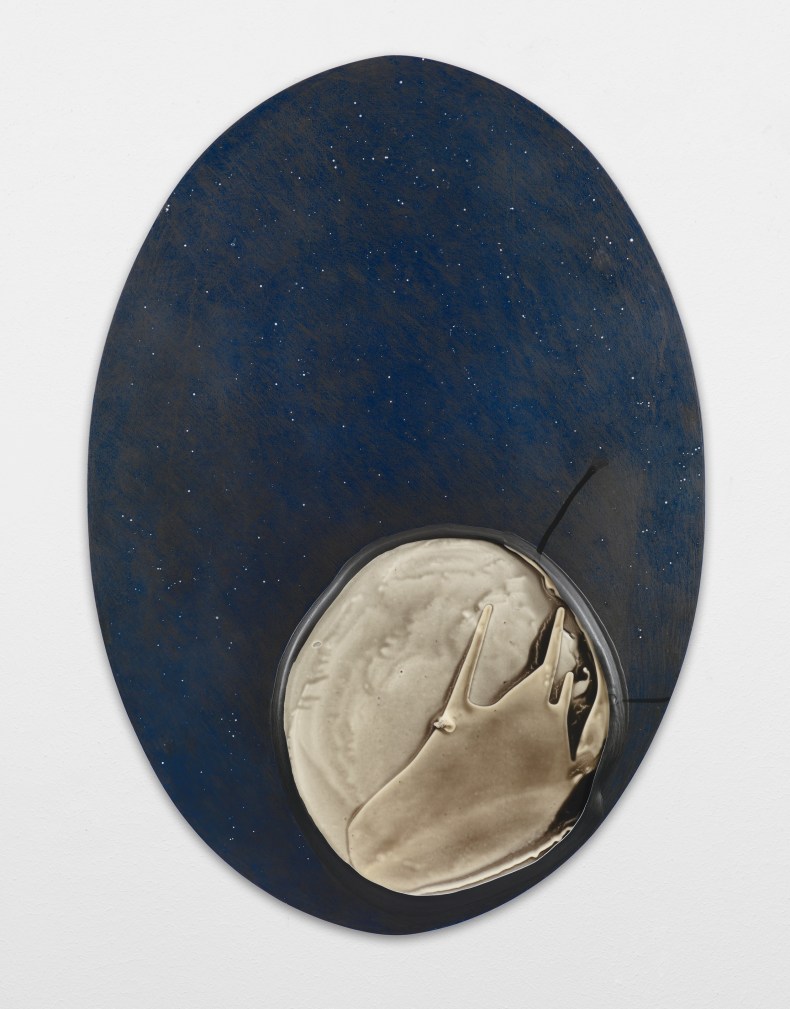
Circle-Eruption (2005), Takesada Matsutani. Courtesy Hauser & Wirth; © Takesada Matsutani
In 1966 Matsutani was awarded first prize for his vinyl works at the first Mainichi Art Competition, and received a six-month scholarship from the French government to study abroad. ‘I was told that Gutai would be waiting for me when I got back. I had no idea that 50 years later I would still be here.’ Soon after moving to Paris Matsutani found a place at Stanley William Hayter’s Atelier 17 workshop. There, he devoted himself to the techniques of etching, printmaking, and silkscreen. Hayter’s workshop was a centre for creative exchange and collaboration. Hayter had founded Atelier 17 in Paris in the early 1930s, re-established it in New York when he moved there during the Second World War, and set it up for a third time when he returned to Paris in 1950. By the time Matsutani arrived at the workshop, it had long been a meeting place for American Abstract Expressionists and the European avant-garde. Influenced by his surroundings and by the paintings of Ellsworth Kelly in particular, Matsutani began to work in a more minimalist style. Matsutani recalls, ‘My friends in Gutai called telling me to come back for the Osaka Expo show, saying, “If you don’t come you are finished.” But I couldn’t. I had found a place at Hayter’s workshop and had just met my wife. It was a very happy period for me.’
After Yoshihara’s death in 1972, the rest of the members of the Gutai Art Association voted to disband the group. The 18 brilliant years of Gutai were over, but its spirit continued to exert an influence on Matsutani, albeit tempered by a newfound intellectual clarity. ‘France changed my thinking. In Japan, the mentality had been, “omoshirokattara ii desu” – it is enough to be interesting. Working with Hayter, I encountered a rationality that I had not experienced before.’
In the early 1970s Matsutani established his own printing workshop and became absorbed making silkscreen-print versions of his earlier vinyl-glue paintings. These works, such as Red-Sun-P (1972) were met with considerable acclaim, and in 1972 he was invited to exhibit in the print-making section of the Venice Biennale. He also won prizes in the UK and California.
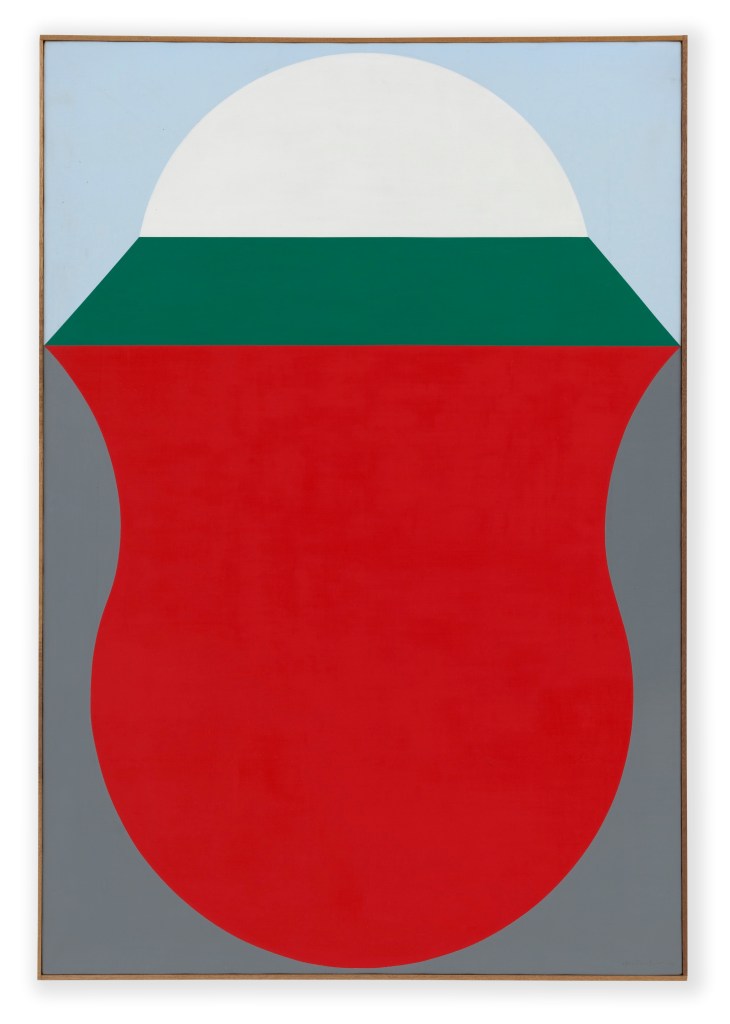
Box of Hope (1972), Takesada Matsutani. Courtesy Hauser & Wirth; © Takesada Matsutani
It was around this time that there was a significant development in Matsutani’s work. ‘I had been in Paris for a long time at that point, and I was thinking a lot about my identity, about a life lived between two cultures. It was then that I reread Junichiro Tanizaki’s In Praise of Shadows.’ In Tanizaki’s famous 1933 tract, the art of the West, with its fixation on progress and rationality, is juxtaposed with the perceived subtlety of Asian art. A famous passage about jade reads, ‘When we see that shadowy surface, we think how Chinese it is, we seem to find in its cloudiness the accumulation of the long Chinese past, we think how appropriate it is that the Chinese should admire that surface and that shadow.’ Matsutani has written, ‘I became interested in the shadows that were created by the wrinkles and protrusions of the vinyl glue on the black-and-white relief paintings. By photo-engraving the shadows, I realised I could give another expressive quality to the original vinyl-glue works.’
He takes me to the far side of his studio, where next to the rather ancient-looking electric fans, sit recent vinyl works, which he has covered in the lines of thousands of meticulously applied graphite strokes. ‘Here,’ he says, pushing me closer to a work, one of the more compact pieces from his Stream series (1977–present). ‘Look. It’s all one black, but because of the shadows it makes form another shade. That’s what I learned from Tanizaki.’
The work, with its use of black ink, and incorporation of negative space (ma), is strongly reminiscent of traditional calligraphy, which Matsutani studied as a child. Indeed his performance pieces such as Stream (2013), have often made use of dried ink-blocks, which the artist grates against rough-cut stone. The performances embody the physicality so characteristic of Gutai, as Matsutani exhausts himself, tirelessly grating the ink block, until it is time for him to make his grand gesture and smear his ink-stained hands on the canvas in a circle around the stone, while the water continues to drip down from above.
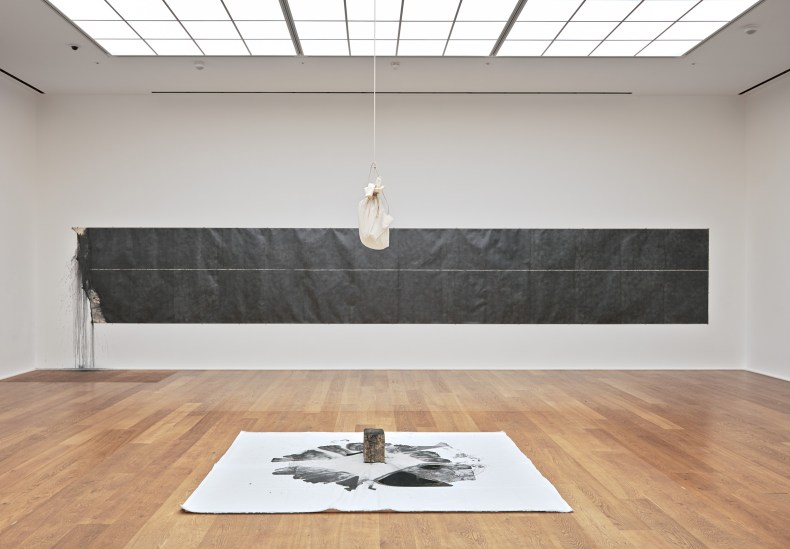
Installation view of Stream, 2013. Courtesy Hauser & Wirth; © Takesada Matsutani
Matsutani’s debt to calligraphy is present throughout his long run of Stream works. The series comprises a variety of pieces on which ink, ash and graphite appear to flow. Some of the most dramatic of these are scrolls – he completed a 13-metre-long piece, Stream-Ashiya-92, for his 1992 exhibition at the Ashiya City Museum of Art and History. The scrolls are filled with countless strokes of pencil, a physical as much as an artistic labour. ‘When I started creating these I had time but no money,’ Matsutani explains. ‘I asked myself what I could do with just a pencil and paper. I started with just sheets of paper and a black pencil, marking time, like a diary.’
He takes me down to a separate storage room, where he picks up and begins to unroll a scroll, revealing a band of black composed of tens of thousands of glimmering individual marks. He lays the piece on the floor, the accumulation of his time and effort, a shimmering torrent of black time steadily unrolling before us until, finally, we reach the end of the piece. In a gesture that echoes Gutai’s obsession with ruin, Matsutani has showered his work with turpentine. The imprint of this destructive act has been captured by the paper, where the solvent has run off the work, dissolving the solid stream of black into frayed ribbons that recall streaks of ash-laden rain or smoke drifting – shadows cast long ago.
From the July/August issue of Apollo: preview and subscribe here
Unlimited access from just $16 every 3 months
Subscribe to get unlimited and exclusive access to the top art stories, interviews and exhibition reviews.

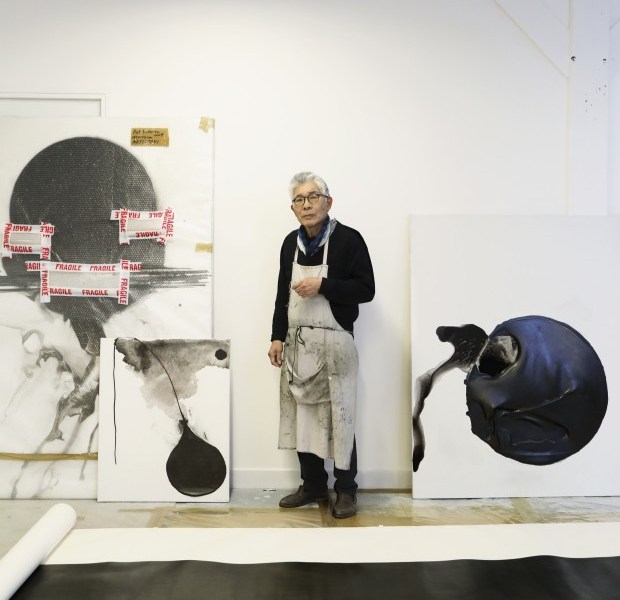
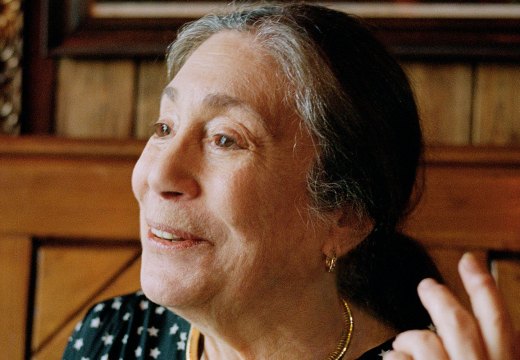
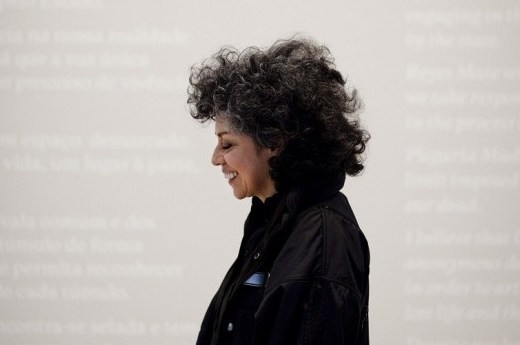
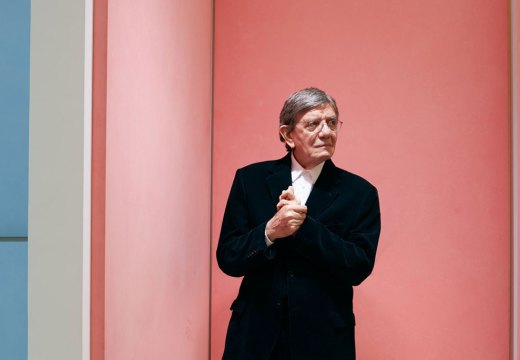









![Masterpiece [Re]discovery 2022. Photo: Ben Fisher Photography, courtesy of Masterpiece London](http://www.apollo-magazine.com/wp-content/uploads/2022/07/MPL2022_4263.jpg)
It’s time for the government of London to return to its rightful home